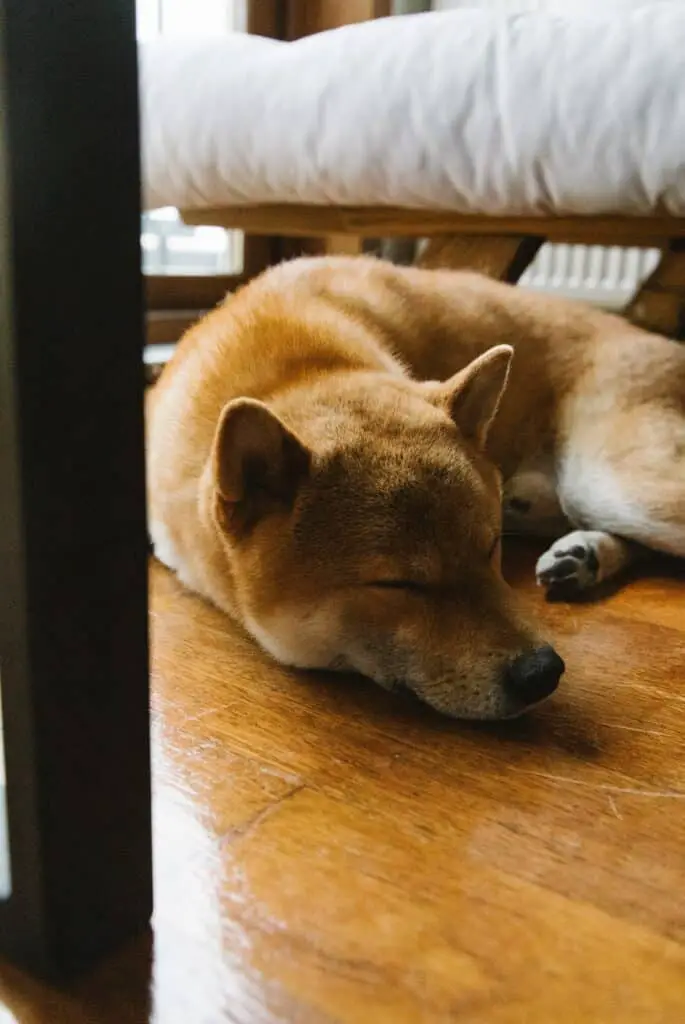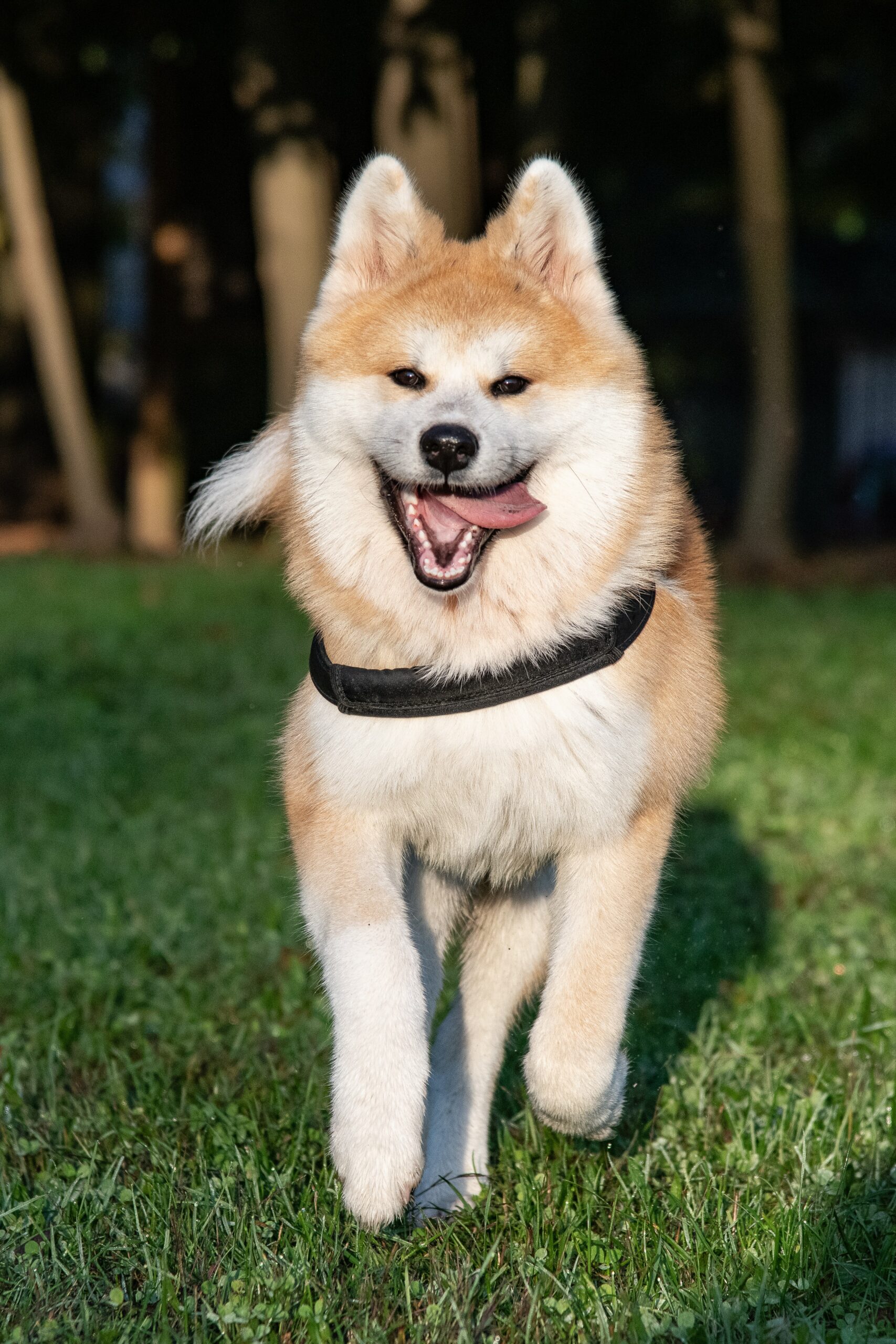There could be many reasons why your dog doesn’t seem to love you.
Maybe you’re not spending enough time with them, or maybe they’re just not that into you.
Dogs are individuals just like people, so it’s possible that your dog simply doesn’t have the same capacity for love that other dogs do.
Could it be something you’re doing?
If you think that your dog is just being mean and isn’t interested in playing, then there may be some things that you can try to improve the situation.
A few of these include:
- Giving your dog plenty of attention
Dogs need a lot of physical affection from their owners, including petting, scratching behind the ears, talking to them, etc.
If you aren’t giving your dog this kind of attention, it will likely become frustrated and start to withdraw from you.
- Playing games with your dog
Games are great for making your dog feel loved and cared about.
Most dogs enjoy fetching balls, tug-of-war, and other activities where they can interact with their owner.
- Training your dog
Teaching your dog new tricks can make him excited to see you again and give you more opportunities to play together.
You can also train your dog to perform certain behaviors such as sit, stay, come, down, shake, roll over, etc.
- Spending quality time with your dog
Spending time together is important for any relationship.
It helps both parties get closer to one another and develop a stronger bond.
- Paying attention to his body language
Your dog will let you know if he’s feeling stressed or anxious by showing different kinds of body language.
He might wag his tail less frequently and pull away when you reach out to touch him.
Pay attention to these signals and respond accordingly.
- Treating your dog well
When you treat your dog well, he rewards you back with good behavior.
This includes feeding him properly, brushing him regularly, taking care of his nails, etc.
- Having fun
If you want your dog to be happy around you, then you should always be having fun too!
That means laughing at silly jokes, telling stories, playing games, etc.
If none of these suggestions work for you, then there are probably some underlying issues that need to be addressed before you can expect your dog to love you back.

Is your dog getting enough exercise?
Dogs need plenty of exercise in order to stay healthy and happy.
Ideally, a dog should get at least two hours of physical activity every day.
If your dog is getting less than this, then he may be bored, stressed out, or possibly even injured.
You can help keep your dog happy and active by playing games with him (like tug-o-war), taking him on walks around the neighborhood, letting him run free in a fenced yard, or letting him play fetch with his favorite toy.
If you want to make sure your dog gets all the exercise he needs, consider hiring a professional trainer who will work one-on-one with your pet.
A good trainer will give your dog plenty of mental stimulation as well as physical activity.
He will also teach you how to properly train your dog so that he learns to behave properly around strangers and other animals.
Could your dog be sick?
Dogs can get sick just like people, and if you think your dog is acting strange or seems to be in pain, you should take them to a veterinarian as soon as possible.
A vet will examine your dog and determine whether there is any underlying problem that needs to be addressed.
If your dog has an illness that requires treatment, a vet may recommend medication or surgery.
If your dog isn’t showing symptoms of an illness, but still doesn’t seem to enjoy being around you, there are some things you should consider doing to help improve their relationship with you.
First, you need to make sure that you are spending enough quality time with your dog.
You should also spend more time on activities that require your dog’s full attention.
This means playing tug-of-war instead of frisbee golf, and taking them out for walks rather than running errands.
If you think your dog might be sick, try these tips to see if you can figure out what the problem is:
- Your dog could be suffering from fleas or ticks.
Check for lumps or bumps under their skin, and gently remove any ticks you find.
- Your dog could be allergic to something.
Look through their coat for signs of redness or rash, and check for anything unusual coming off their body.
- Your dog could be suffering from an injury.
If you notice swelling or bruising, take your dog to the vet right away.
Even minor injuries can lead to serious problems if left untreated.
- Your dog could be suffering from an obstruction in their digestive system.
Any change in appetite, vomiting, diarrhea, or blood in the stool indicates that your dog is having trouble digesting food properly.
Contact your vet immediately.
- Your dog could be suffering from worms.
If you notice thick fur, tracks, or scats around the house, your dog could be infected with roundworms.
- Your dog could be suffering from a urinary tract infection.
Signs of this include frequent urination or excessive drooling.
See your vet immediately if you observe any of these symptoms.
- Your dog could be suffering from heat exhaustion.
If your dog begins panting excessively, looks weak and lethargic, or develops a fever, contact your vet immediately.
- Your dog could be suffering from dehydration.
Dehydration occurs when your dog loses too much water through their urine, sweat, or feces.
Take your dog to the vet if they begin to look thirsty or listless, or if you notice any changes in their poop.
- Your dog could be experiencing kidney failure.
Your dog could suffer from renal failure if their kidneys stop working normally, resulting in increased fluid loss through their urine and/or decreased fluid levels in their bloodstream.
- Your dog could be suffering from heart disease.
Heart disease can cause your dog to lose weight, become sluggish, or experience breathing difficulties.
Contact your vet if you see any of these symptoms.
- Your dog could be suffering from liver disease.
Liver disease can cause your dog to lose weight, become lethargic, or develop jaundice (yellow eyes and fur).
Contact your vet if you see any of these symptoms.
- Your dog could be suffering from pancreatitis.
Pancreatitis is an inflammation of the pancreas that usually results in abdominal pain, nausea, and vomiting.
If you suspect that your dog is suffering from pancreatitis, take them to the vet immediately.
- Your dog could be suffering from diabetes.
Diabetes causes your dog to gain weight, develop thirst, and urinate frequently.
The most common symptom of diabetes is increased thirst caused by low blood sugar.
If you notice any of these symptoms, contact your vet immediately.

Are you providing enough attention?
Dogs are pack animals and need a lot of social interaction in order to thrive.
This is especially true when they are puppies because they rely on their parents for everything from food to playtime.
As a result, if you don’t spend enough time playing with your puppy, or even ignoring them completely, you may find that they lose interest in you as well.
While this can be frustrating, it’s important to remember that dogs are naturally curious creatures who want to explore new things and learn about the world around them.
If you keep them isolated too much, though, they will quickly become bored and depressed.
This can lead to destructive behaviors such as chewing, digging holes, and destroying your home.
The key to keeping your dog happy and healthy is to provide lots of interactive opportunities each day.
That means making sure that your dog has access to plenty of exercise, toys, and treats.
You should also make sure that they have plenty of fresh water and that their living space is clean and free of clutter.
Finally, you should give them plenty of opportunities to interact with other dogs and people so that they get used to being around others.
If you feel like your dog isn’t getting enough attention from you, consider trying some of these tips:
- Play with your dog often instead of talking to him all the time.
Letting your dog know that you value his company will go a long way toward ensuring he remains interested in you.
- Give the dog plenty of opportunities to meet new people and animals.
Take them to visit family members or friends so that they get used to meeting different kinds of people.
- Make sure that you are physically active with your dog.
Walking, jogging, swimming, and hiking are great ways to tire out both you and your dog.
- Provide your dog with plenty of toys so that they can use their energy while you are busy doing other things.

Is your dog’s environment enriching?
Dogs need plenty of exercise and stimulation to keep their minds active.
If your dog is bored, he may start to show signs of frustration and aggression.
This can lead to destructive behavior such as chewing on things, destroying property, or even attacking humans.
Your dog needs a place where he can run around and play with his friends, but if you live in an apartment complex, this may not be possible.
He also needs food and water, which can be hard to come by in some places.
You should make sure that your dog has access to fresh air and sunshine whenever possible.
The best way to ensure that your dog gets what he needs is to provide him with a large, securely fenced yard.
If you live in a house instead of an apartment complex, make sure that you spend lots of time playing with your pet.
Playing games such as fetch, tug-of-war, and hide-and-seek will help keep your dog’s mind sharp and active.
You should also try to plan ahead and schedule regular walks with your dog.
This helps keep his mind stimulated and keeps him from getting too bored.
You can take long walks together, or do short runs that include stops at interesting places.
Whenever possible, try to get your dog involved in training classes and obedience training sessions.
These activities will keep your dog mentally sharp and ready for all kinds of challenges throughout his life.
In addition to these activities, you should definitely give your dog plenty of affection.
When you hold him close, rub his belly, or talk softly to him, he’ll know that you care about him.
Try to avoid giving your dog treats when he does something wrong.
Treats are great incentives, but they’re not always appropriate.
Instead, praise him whenever he does something good.
When you see that he likes you, reward him with a treat every few times that he does something nice.
Don’t forget to use verbal commands and hand signals when teaching your dog new behaviors.
It’s important to communicate with your dog using the language that he understands.
For example, a “sit” command is easier for most dogs to understand than a “down” command.
If you don’t think that your dog is receiving enough mental stimulation, consider enrolling him in a puppy kindergarten class.
Puppy kindergarten classes are designed specifically for puppies, and they teach basic obedience skills and socialization.
They also include fun learning exercises such as fetch, agility, and obstacle courses.
Some classes offer free lessons, while others charge a small fee.
Check with local schools to find out more information.
Have you tried positive reinforcement?
Positive reinforcement is essentially what we humans call reward-based training.
In a nutshell, this means that you get something in return for doing something good.
The most common example of positive reinforcement would be when someone gives you money as a reward for cleaning up after your dog.
This works because the act of cleaning up is an enjoyable activity for both you and your pet, which makes it more likely that you will keep on doing it.
The problem with positive reinforcement is that it can turn a pet into a slave.
If you want your dog to stop barking at you, you have to keep giving them treats until they learn how to stop barking, even if the barking annoys you.
It becomes a vicious cycle that ends up making you resent your dog.
A better way to train your dog is by using negative reinforcement.
Negative reinforcement basically means that you give your dog something bad instead of something good.
For example, if you want to teach your dog not to bark at strangers, you don’t give them treats every time they start barking, but rather, you yell at them whenever they start barking.
You then quickly give them a treat whenever they stop barking.
This is a much more effective method than positive reinforcement since it involves no rewards whatsoever.
Negative reinforcement is also known as punishment-based training, which is probably the most widely used form of animal training.
It’s very easy to use and requires little effort from either you or your dog.
It’s also effective, although it may take longer to train your dog.
Because punishment-based training involves no rewards, however, it may cause some resentment between you and your pet.
If you’re looking for a quick fix to make your dog love you, there are a few things you should consider trying first.
Consulting a professional
If you suspect that there is an issue with your relationship with your dog, then it may be worthwhile consulting a professional about what you can do to improve it.
Although this can vary depending on the individual circumstances of each case, some common techniques include:
- Using positive reinforcement to strengthen their bond with you.
- Using negative reinforcement to reduce unwanted behavior.
- Providing socialization opportunities in order to help your dog develop a healthy sense of self and independence.
- Creating more structure for your dog by introducing new routines, such as using a leash when going out, having a designated spot to go to after being walked, or establishing daily walks for your pet.
- Reducing stress levels by training your dog to respond to certain stimuli, such as a clicker or a treat.
Remember that even though these techniques may work for others, they will not necessarily work for every dog.
If you suspect that your dog does not have the same capacity for love that other dogs do, consult a professional before making any changes to your relationship with them.
- What Dog Breeds Have Pink Skin? - March 24, 2023
- What Are the Most Inspiring Dog Breeding Quotes? - March 20, 2023
- Can Pheromone Spray Help Improve Dog Breeding Results? - March 19, 2023








